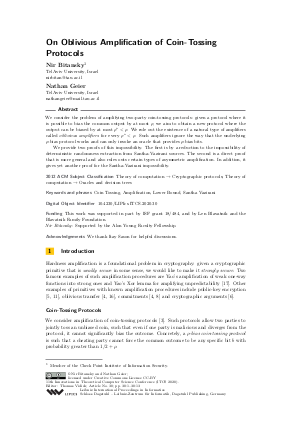LIPIcs.ITCS.2020.30.pdf
- Filesize: 484 kB
- 13 pages

 Creative Commons Attribution 3.0 Unported license
Creative Commons Attribution 3.0 Unported license




Feedback for Dagstuhl Publishing